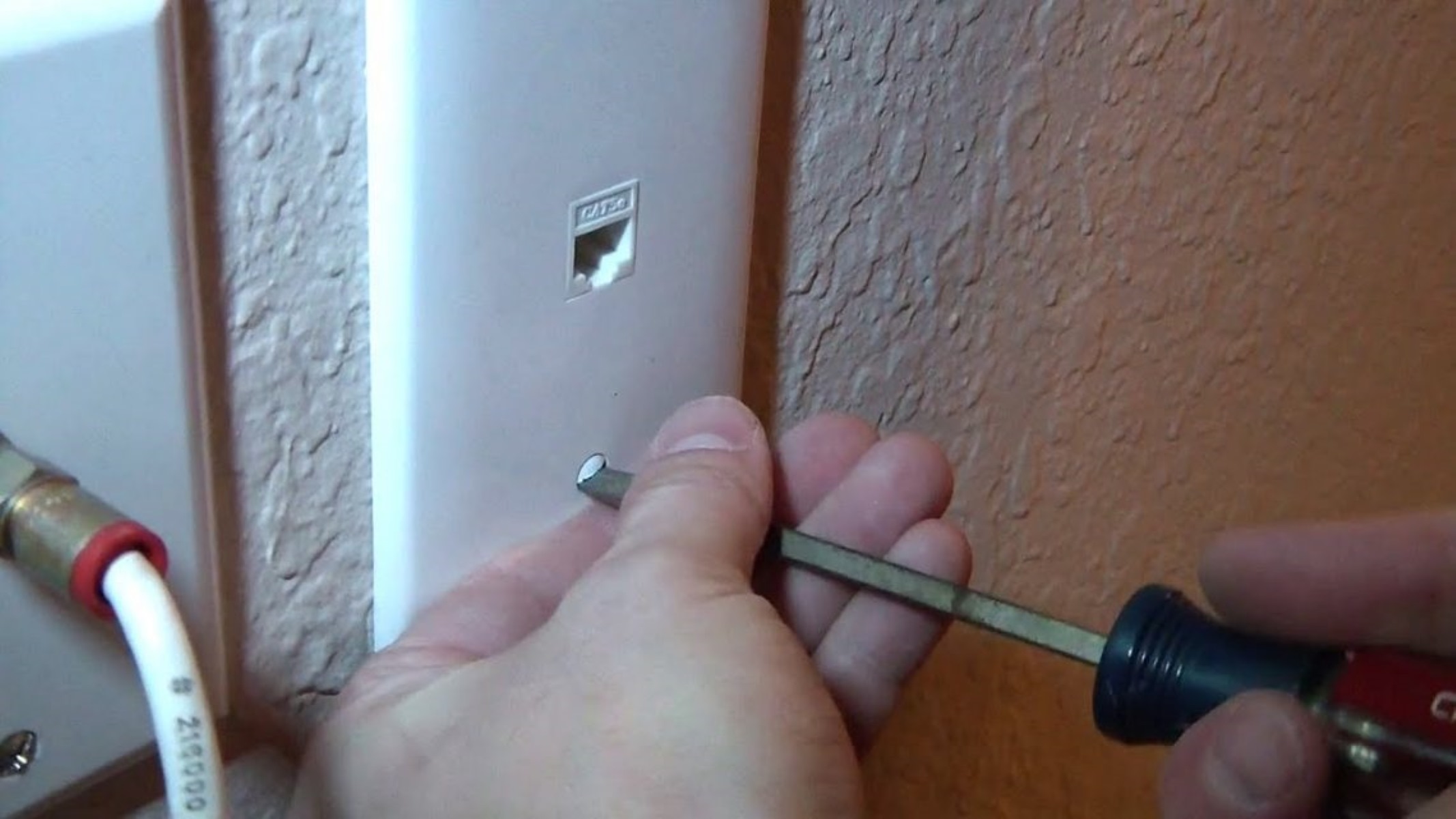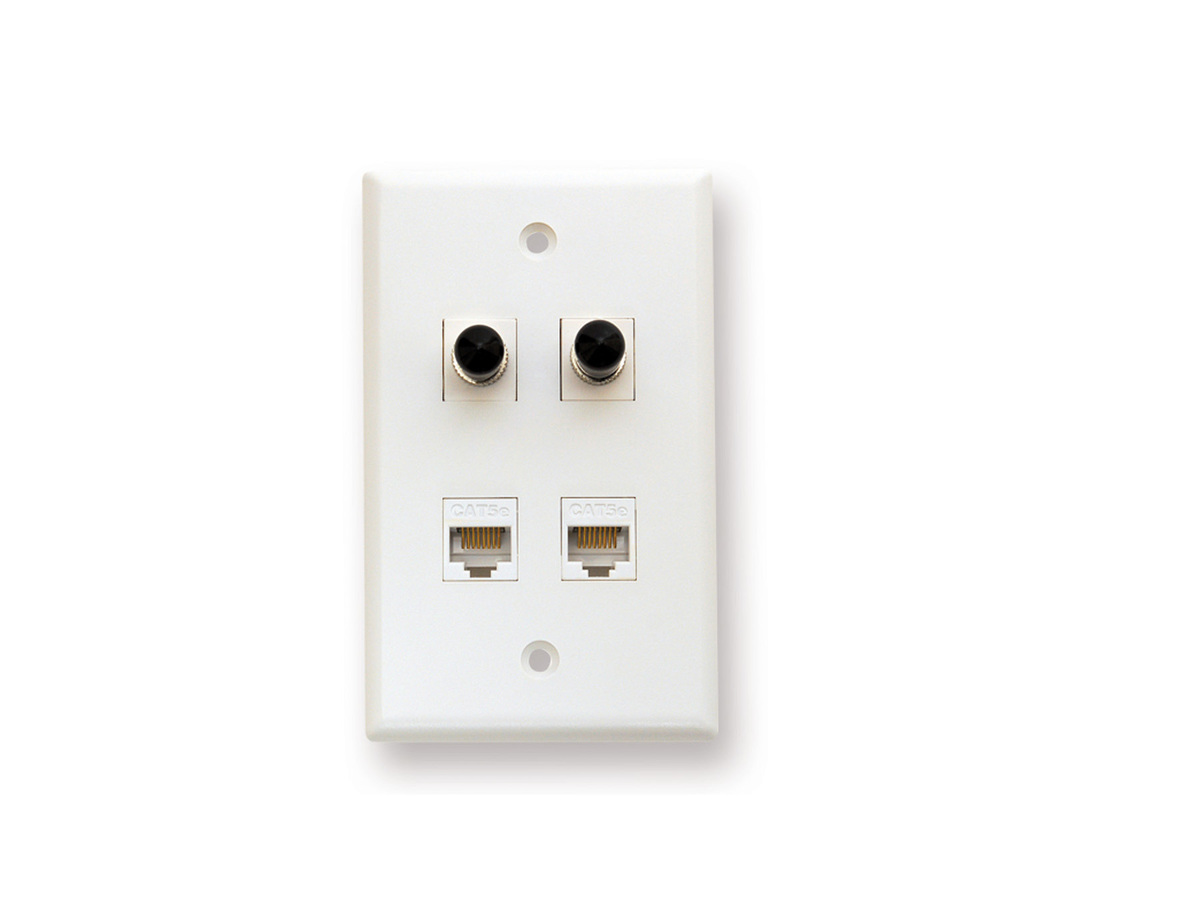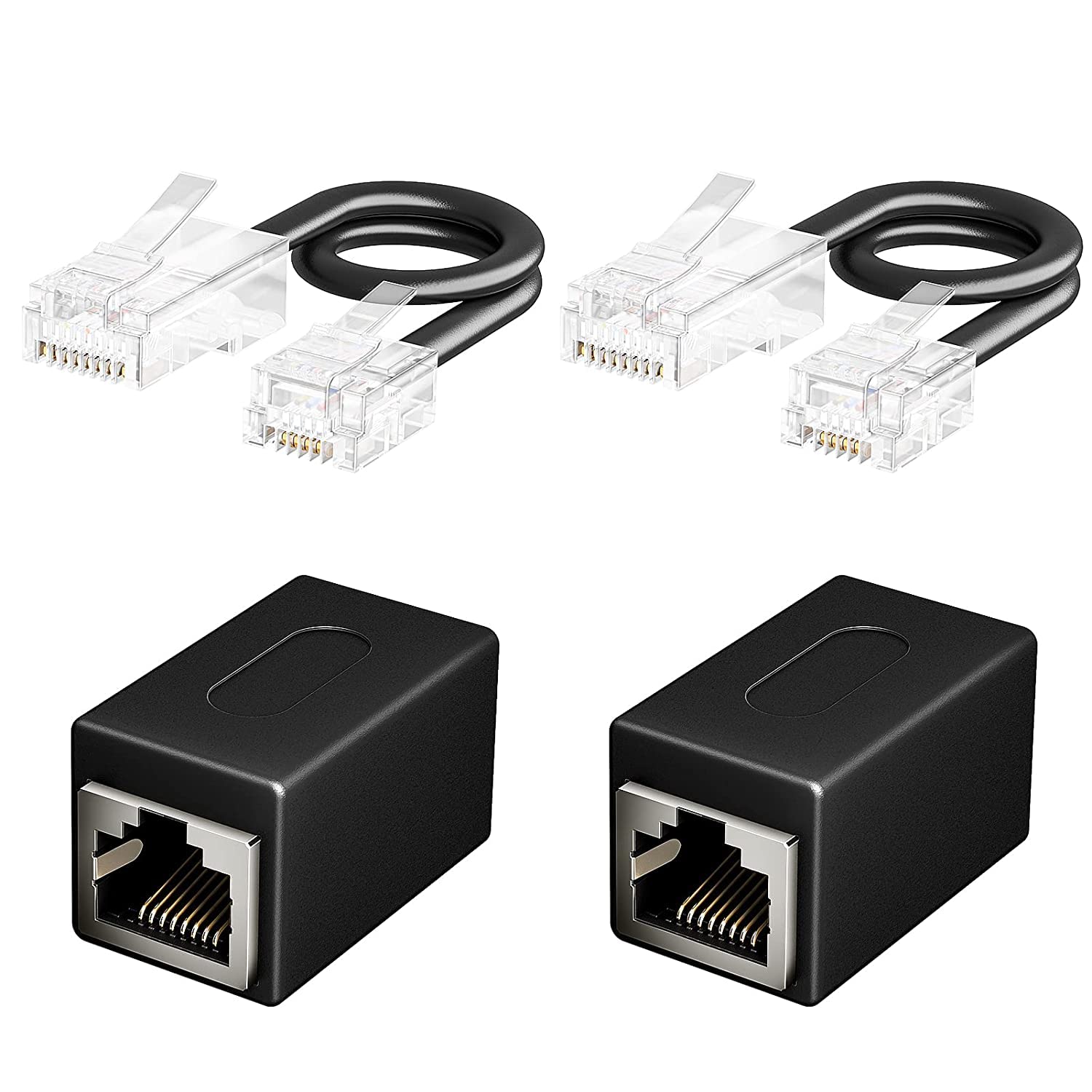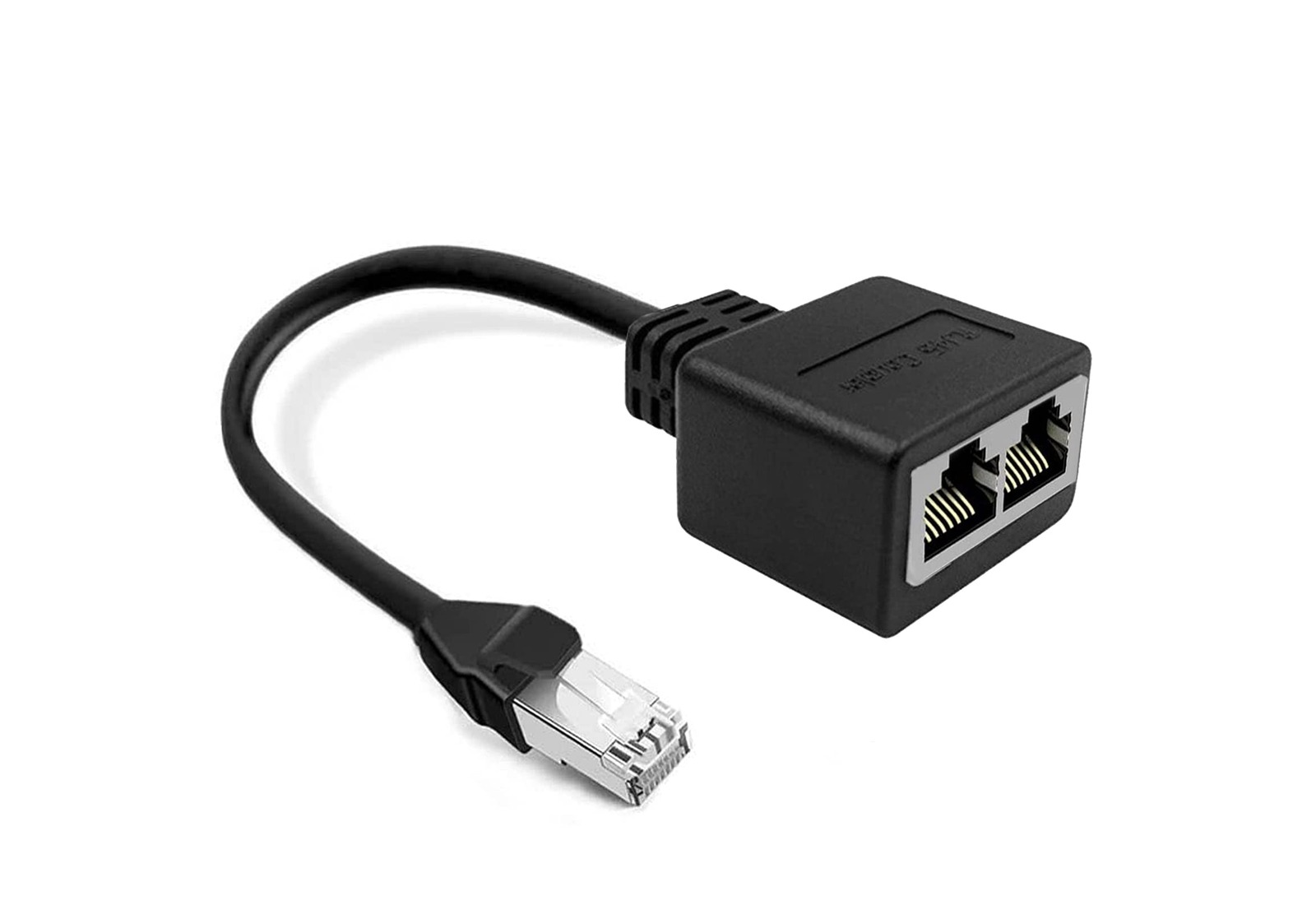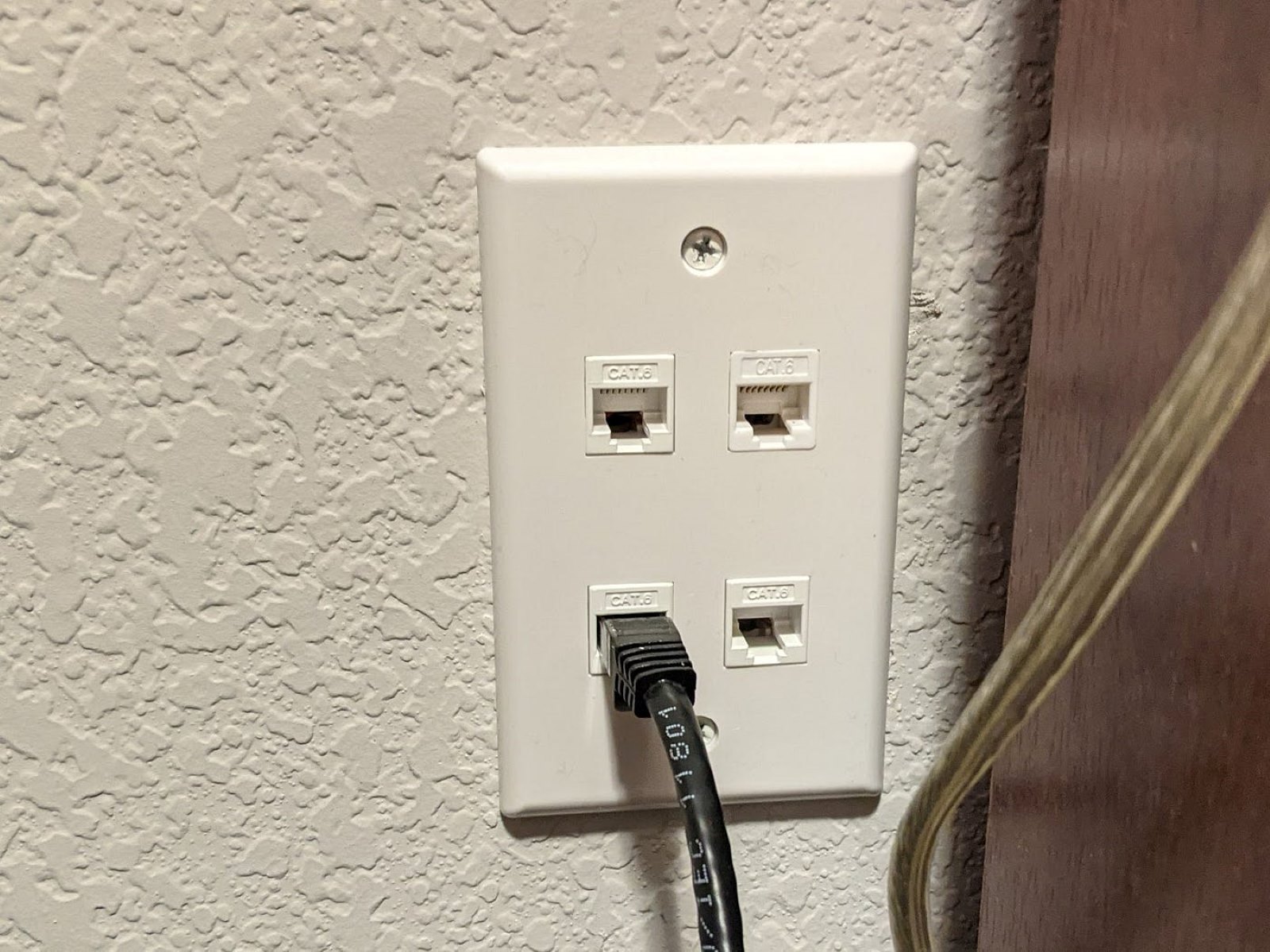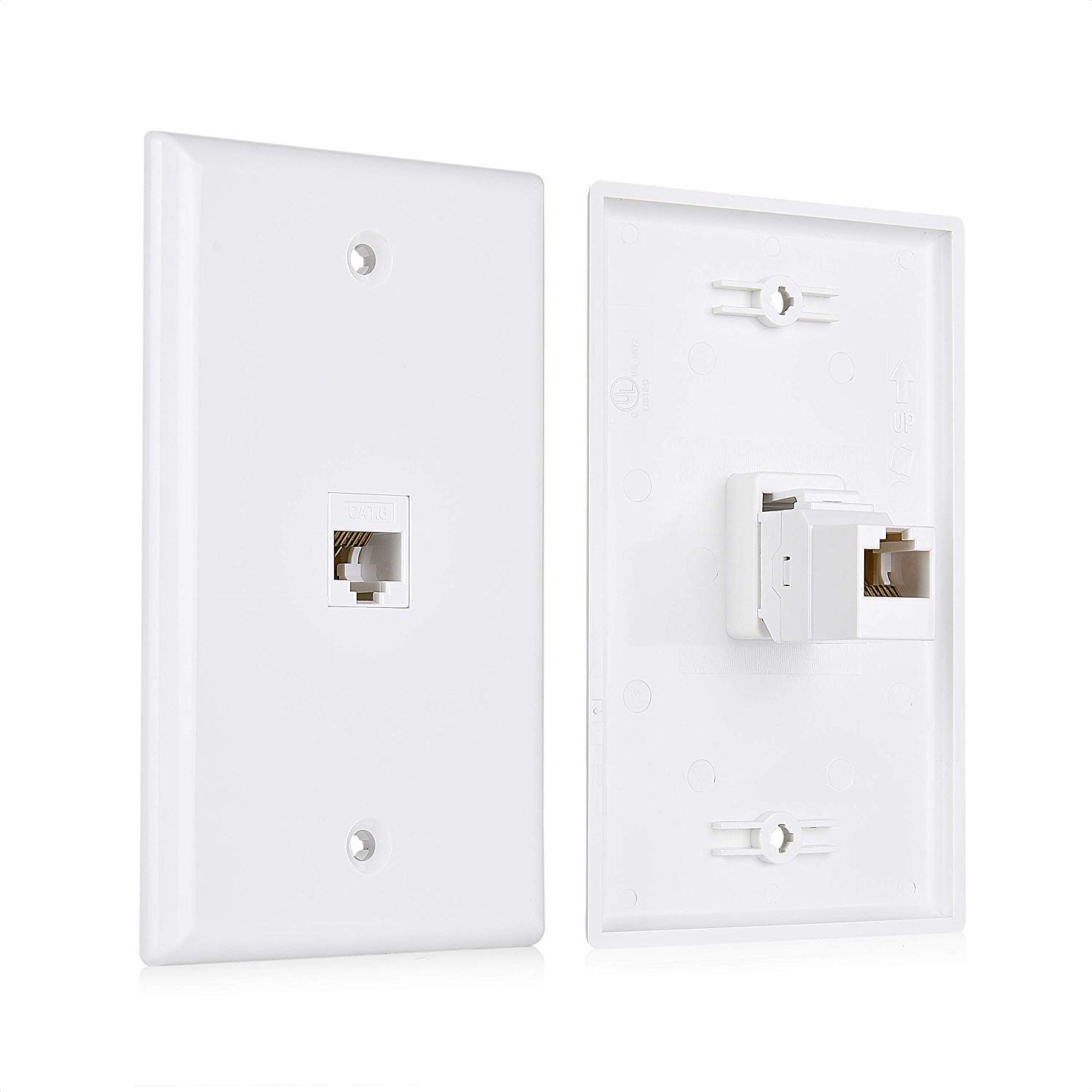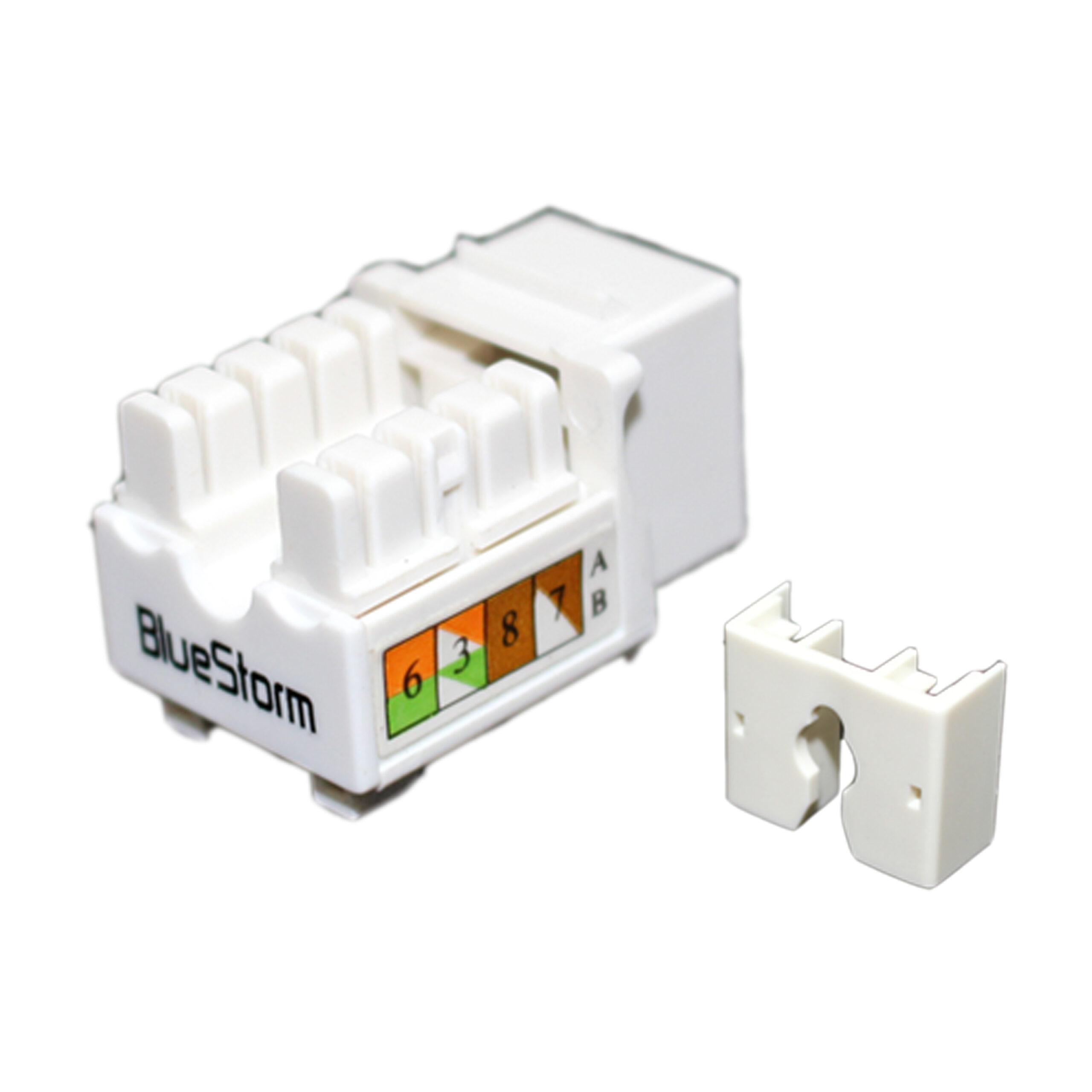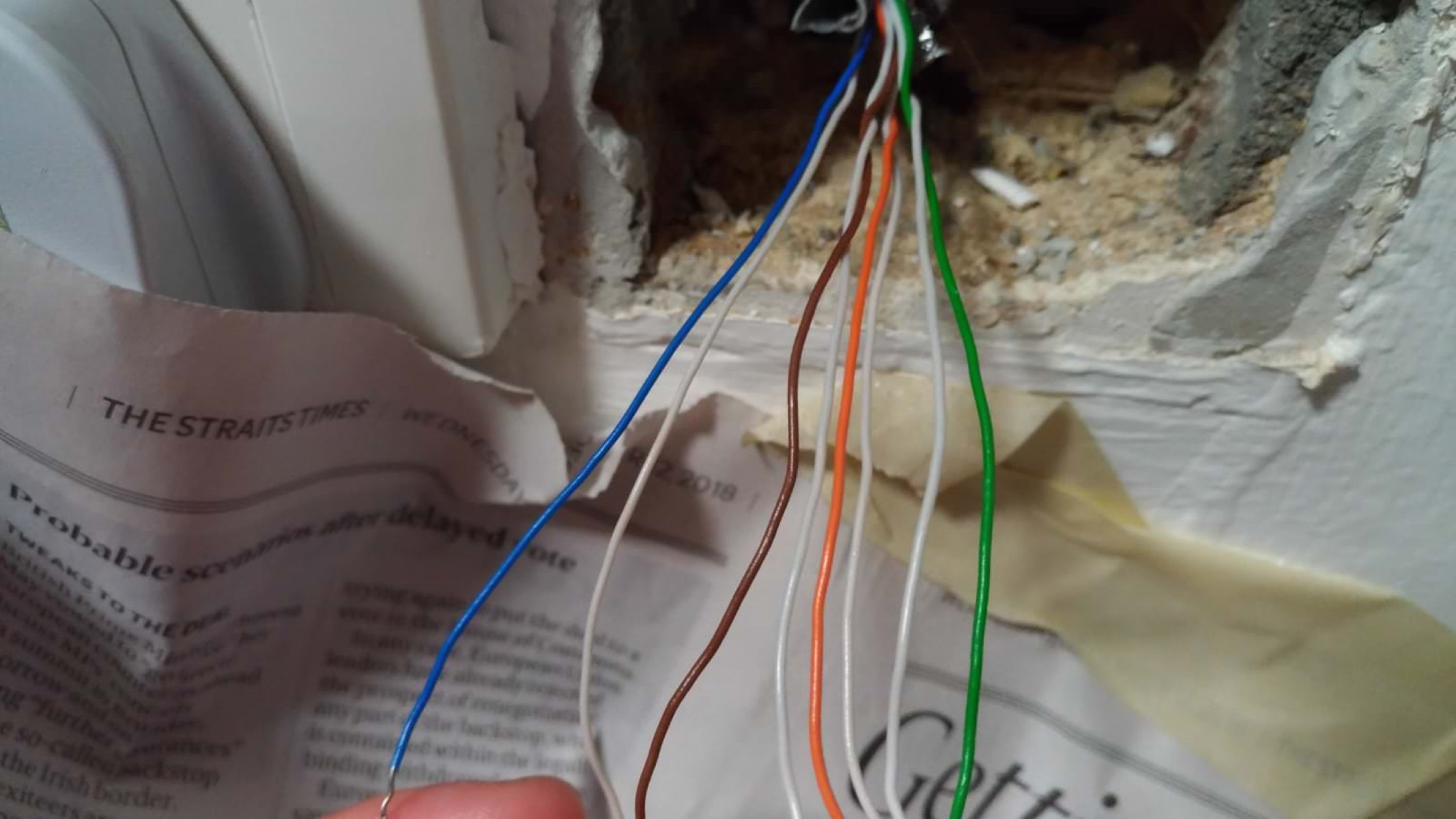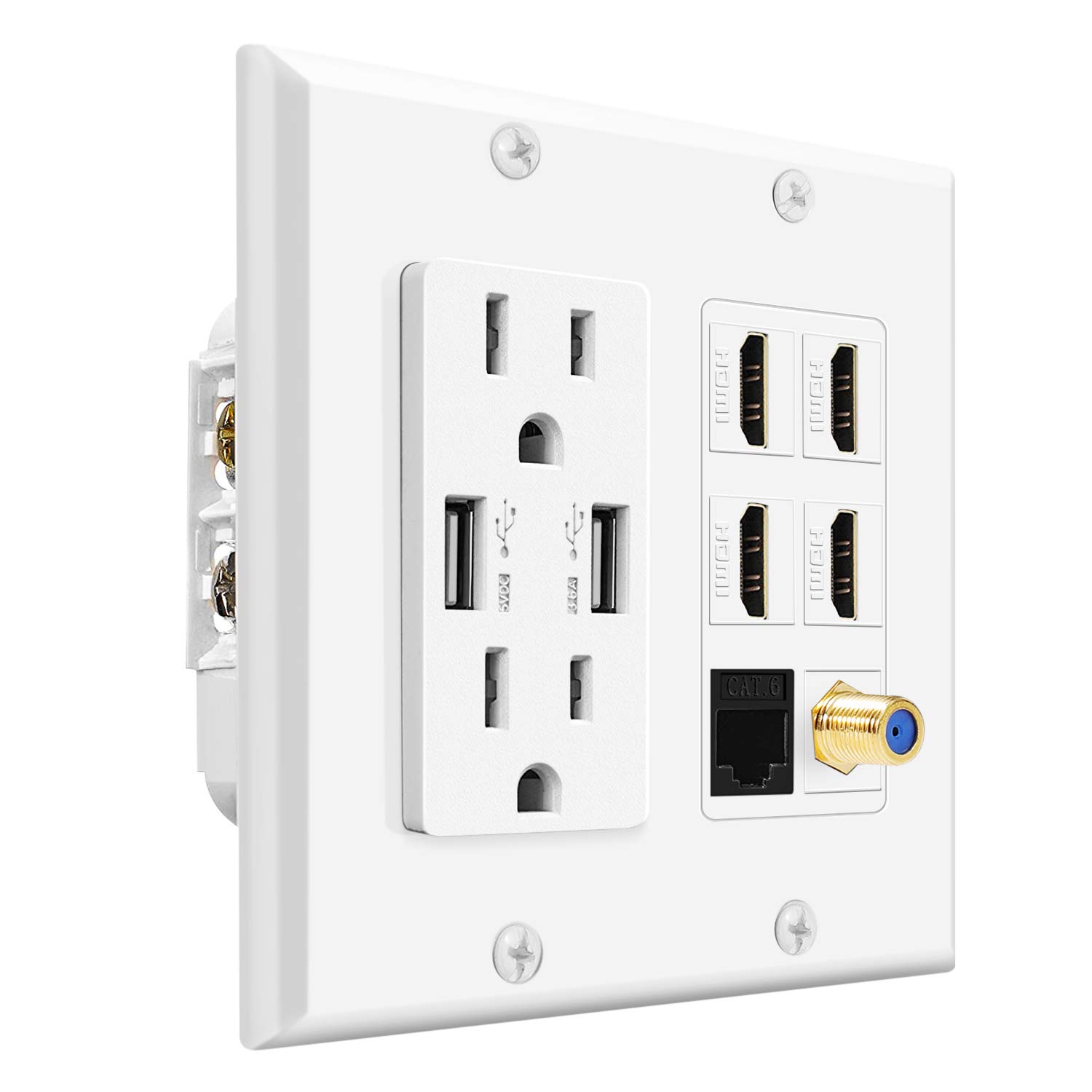Introduction
Welcome to our step-by-step guide on how to install an Ethernet jack. Whether you’re looking to upgrade your home network or set up a new office space, installing Ethernet jacks can provide a fast and reliable wired internet connection to multiple devices. This process may seem daunting at first, but with a little planning and preparation, you’ll have your Ethernet jack up and running in no time!
Having a direct Ethernet connection offers several advantages over a wireless network, such as increased speed, reduced latency, and improved reliability. Ethernet jacks provide a convenient and professional way to connect devices like computers, gaming consoles, and smart TVs directly to your network.
In this guide, we’ll walk you through each step of the installation process, from planning and preparation to testing the Ethernet connection. By the end, you’ll have a solid understanding of how to install an Ethernet jack and enjoy the benefits of a wired internet connection throughout your space.
Before we dive into the details, it’s essential to plan your installation carefully. Assessing your needs and considering the layout of your space will help you make informed decisions and streamline the installation process. Let’s get started!
Planning and Preparation
Before you start installing an Ethernet jack, it’s crucial to plan and prepare for the project. Proper planning will save you time and ensure a successful installation. Here are some key steps to consider:
1. Determine the Installation Area: Start by identifying the specific areas in your home or office where you need Ethernet connectivity. Consider the devices you want to connect and the locations where you’ll be using them the most. This will help you decide on the number of Ethernet jacks required and their placement.
2. Assess the Cable Route: Next, examine the route from your network switch or router to the desired installation area. Take note of any obstacles like walls, floors, or ceilings that may obstruct the cable. If you encounter challenges, you might need to explore alternative cable routes or use tools like cable raceways to conceal the wiring.
3. Check for Existing Ethernet Wiring: If you’re setting up Ethernet jacks in an existing building, check if there are any pre-installed Ethernet cables or ports in the walls. Utilizing existing wiring can save time and effort. If there are no existing Ethernet connections, don’t worry, as we’ll guide you through the process of running new cables.
4. Consider Cable Length: Measure the required length from the network switch or router to each installation area. Be sure to account for any additional length needed to run the cable along the walls or ceilings. It’s always better to have extra cable length for flexibility rather than falling short during the installation.
5. Note Power Requirements: Keep in mind that some Ethernet devices, such as IP phones or security cameras, may require power over Ethernet (PoE). Ensure that your network switch or router supports PoE or plan for power injectors/adapters if necessary.
6. Obtain Necessary Permits: In certain situations, such as installing Ethernet jacks in a commercial or rental property, it may be necessary to obtain permits or seek permission from the building owner. Check local regulations and obtain any required permissions before proceeding with the installation.
7. Gather Tools and Materials: Finally, make a list of the tools and materials you’ll need for the installation. This typically includes Ethernet jacks, Ethernet cables of appropriate length, a network switch or router, a hole saw or keyhole saw, a drywall saw, a stud finder, a screwdriver, and cable management accessories. Having all the required tools and materials readily available will make the installation process smoother.
Once you have completed the planning and preparation steps, you’ll be ready to move on to the next phase: selecting the type of Ethernet jack you want to use. Excited? Let’s dive in!
Tools and Materials Needed
Before you start installing an Ethernet jack, it’s essential to gather all the necessary tools and materials. Having everything prepared will make the installation process much smoother. Here’s a list of what you’ll need:
1. Ethernet Jack: Choose an Ethernet jack that suits your needs. There are various types available, including keystone jacks, wall plate jacks, and surface mount jacks. Consider the aesthetics, functionality, and compatibility with your network setup when selecting the type of jack.
2. Ethernet Cable: Get high-quality Ethernet cables of the required length to connect your devices to the Ethernet jack. It’s recommended to use Cat 5e or Cat 6 cables for optimal performance. Measure the distance between the jack and your network switch or router to ensure you have enough cable.
3. Network Switch or Router: You’ll need a network switch or router to connect all your Ethernet devices. Ensure that it has enough available ports to accommodate the number of Ethernet jacks you plan to install. If you already have a network setup, check its compatibility with the jack and cables you’re using.
4. Hole Saw or Keyhole Saw: To cut a hole in the wall for the Ethernet jack, you’ll need a hole saw or keyhole saw. The size of the saw should match the dimensions specified by the Ethernet jack you’re using.
5. Drywall Saw: If you don’t have access to an existing electrical box or wall cavity, you may need to cut a hole in the drywall to run the Ethernet cable. A drywall saw will help you make clean and precise cuts.
6. Stud Finder: When running the Ethernet cable through the wall, it’s essential to avoid damaging any electrical wires or hitting any studs. A stud finder will help you locate the studs in the wall, enabling you to safely drill holes and route the cable.
7. Screwdriver: You’ll need a screwdriver to secure the Ethernet jack to the wall or wall plate. The exact type of screwdriver required will depend on the screws provided with the Ethernet jack.
8. Cable Management Accessories: Consider using cable management accessories like cable clips or raceways to keep the Ethernet cable neatly organized and secured along the wall or baseboard.
Make sure to have all these tools and materials readily available before you begin the installation process. Having everything prepared will help you work efficiently and ensure a successful installation of your Ethernet jack.
Step 1: Locate the Desired Installation Area
The first step in installing an Ethernet jack is to identify the desired installation area. Take some time to assess your needs and determine where you want the Ethernet connection to be available. Here’s how to proceed:
1. Evaluate Device Placement: Consider the devices you want to connect via Ethernet and where they will be located. Identify areas where you frequently use devices like computers, gaming consoles, smart TVs, or streaming devices. These are the areas where you’ll want to have Ethernet connectivity.
2. Check Wall Accessibility: Examine the walls in your chosen areas and determine if they’re easily accessible. Look for existing electrical outlets or wall plates that can serve as potential installation points. If accessibility is an issue, you may need to consider alternative options like surface mount jacks.
3. Consider Furniture Placement: Take into account the layout of your furniture in the installation area. Ensure that the Ethernet jack’s placement does not interfere with the positioning of your furniture or create any obstructions. You want to have easy access to both the Ethernet jack and your connected devices.
4. Assess Cable Routing: Determine the most efficient path for running the Ethernet cable from your network switch or router to the desired installation area. Keep in mind the distance and any potential obstacles such as walls, floors, or furniture. It’s advisable to choose a route that minimizes cable visibility and protects the cable from potential damage.
5. Consider Aesthetics: Think about the overall aesthetic look of the installation area. If you’re planning to run the Ethernet cable along the wall, consider cable management options like raceways or clips to keep the cable neat and organized. You can also opt for wall plates that match your décor and complement the surroundings.
6. Review Power Availability: If you’re planning to connect devices that require power over Ethernet (PoE), ensure that a power source is available near the installation area. PoE devices, such as IP cameras or VoIP phones, require both an Ethernet connection and a power source, so it’s important to consider this during the location selection process.
By carefully evaluating the desired installation area, you can ensure that the Ethernet jack is conveniently located and meets your connectivity needs. Once you’ve determined the installation area, you’re ready to move on to the next step: selecting the type of Ethernet jack that best suits your requirements.
Step 2: Select the Type of Ethernet Jack
After identifying the desired installation area for your Ethernet jack, the next step is to choose the type of Ethernet jack that best suits your needs. There are several options available, each with its own advantages and considerations. Here’s a breakdown of the different types of Ethernet jacks:
1. Keystone Jacks: Keystone jacks are popular and versatile options for Ethernet installations. They can be easily inserted into a compatible wall plate, patch panel, or surface mount box. Keystone jacks offer flexibility as they can be replaced or upgraded without replacing the entire wall plate or installation infrastructure.
2. Wall Plate Jacks: Wall plate jacks are installed directly onto an electrical box or wall surface. They provide a clean and professional appearance, seamlessly blending into your existing electrical outlets or switches. Wall plate jacks are available in various configurations to accommodate specific cable types, such as Cat 5e or Cat 6.
3. Surface Mount Jacks: Surface mount jacks, also known as “keystone surface mounts,” are a practical solution when wall installation is not feasible. They can be mounted directly onto walls, baseboards, or any other suitable surface. Surface mount jacks are a good option for temporary installations or situations where drilling into walls is not desirable.
4. Inline Couplers: Inline couplers are used to join two Ethernet cables together. They don’t require a wall installation and are often used for extending or connecting Ethernet cables in situations where an additional Ethernet jack is not needed. Inline couplers are simple to use and can be easily disconnected if required.
5. Patch Panels: Patch panels are mainly used in larger network setups where multiple Ethernet cables are terminated and organized. They provide a centralized location for connecting various devices to the network. Patch panels are typically installed in server rooms or network closets, and they require additional accessories like patch cords to connect to the devices.
When selecting the type of Ethernet jack, consider factors such as functionality, aesthetics, installation requirements, and future scalability. Choose a jack that suits your specific needs and matches your network infrastructure.
Once you’ve decided on the type of Ethernet jack, it’s time to move on to the next step: measuring and cutting the hole for the jack. Let’s proceed!
Step 3: Measure and Cut the Hole for the Jack
Once you have selected the type of Ethernet jack, the next step is to measure and cut the hole in the wall for the jack. This step is crucial as it ensures a proper fit and seamless installation. Here’s how to proceed:
1. Gather the Necessary Tools: Before you begin, make sure you have a hole saw or keyhole saw that matches the dimensions specified by the Ethernet jack. Additionally, keep a stud finder handy to avoid drilling into any studs or other obstacles behind the wall.
2. Measure the Hole Size: Refer to the manufacturer’s instructions or the dimensions of the Ethernet jack to determine the appropriate size for the hole. Typically, a hole with a diameter slightly larger than the jack’s faceplate is required. Use a measuring tape or ruler to mark the outline of the hole on the wall.
3. Find a Suitable Location: Place the jack faceplate against the marked area, ensuring that it aligns with other nearby wall fixtures like electrical outlets. Adjust the position as necessary to ensure a balanced and aesthetically pleasing installation.
4. Locate and Avoid Obstacles: Use a stud finder to check for any studs or electrical wires behind the wall in the area where you plan to cut the hole. This step is essential to prevent damaging any structural components or electrical wiring. Adjust the location of the hole if needed to avoid obstacles.
5. Cut the Hole: If you are using a hole saw, carefully drill into the marked area, applying steady pressure. Slowly rotate the saw to cut through the wall. If you are using a keyhole saw, insert the blade into the marked area and saw along the outline of the hole. Take your time and maintain control over the saw to create a clean and precise cut.
6. Check the Fit: After cutting the hole, test the fit of the Ethernet jack. The jack should sit flush against the wall, with the faceplate covering the hole. If the fit is too tight or loose, make minor adjustments to the hole size until the jack fits properly.
7. Clean Up: Once you are satisfied with the fit, clean up any debris or dust around the hole using a vacuum or brush. This will ensure a clean installation and prevent any interference with the Ethernet jack or cables.
By measuring and cutting the hole accurately, you’ll ensure a seamless fit for your Ethernet jack. With the hole prepared, you can now move on to the next step: running the Ethernet cable through the wall.
Step 4: Run Ethernet Cable through the Wall
Now that you have cut the hole for the Ethernet jack, it’s time to run the Ethernet cable through the wall. This step requires careful attention to detail and proper cable management techniques to ensure a clean and well-organized installation. Follow these steps to run the Ethernet cable through the wall:
1. Plan the Cable Route: Determine the best route for the Ethernet cable from the network switch or router to the location of the Ethernet jack. Keep in mind any obstacles such as wall studs or other existing wiring and plan a route that minimizes cable visibility and potential damage.
2. Prepare the Cable: Measure and cut the Ethernet cable to the appropriate length for the planned route. Leave some extra length to allow for flexibility during the installation process.
3. Locate Wall Cavities: Before drilling into the wall, use a stud finder or other means to locate any wall cavities or existing wiring. This will help you avoid drilling into any obstacles and ensure a smooth cable run.
4. Drill Access Holes: If there are no existing wall cavities, you’ll need to drill access holes to pass the Ethernet cable through the wall. Use a drill with a drill bit suitable for the size of the cable. Carefully drill small holes at the top and bottom of the wall, near the desired installation area.
5. Feed the Cable: Starting from the access hole at the network switch or router, feed the Ethernet cable through the drilled holes and into the wall. Use a fish tape or cable puller to guide the cable and ensure a smooth and snag-free installation. Be patient and take your time to avoid damaging the cable or any existing wall structures.
6. Pull the Cable Through: Once one end of the cable is inside the wall, gently pull it through the access hole near the Ethernet jack location. Ensure that the cable has enough slack to reach the jack comfortably without being too tight or excessively loose.
7. Secure the Cable: Use cable clips or other cable management accessories to secure the Ethernet cable along the wall or baseboard and prevent it from dangling or being tripped over. This will not only improve the appearance of the installation but also protect the cable from damage.
8. Seal Access Holes: If necessary, use caulking or putty to seal the access holes where the cable enters and exits the wall. This will provide a clean finish and help prevent drafts or pests from entering through the holes.
By following these steps, you’ll successfully run the Ethernet cable through the wall, bringing it closer to the installation area. In the next step, we’ll discuss how to connect the Ethernet cable to the jack.
Step 5: Connect the Ethernet Cable to the Jack
Now that you have run the Ethernet cable through the wall and brought it near the installation area, it’s time to connect the cable to the Ethernet jack. This step involves properly terminating the cable and ensuring a secure and reliable connection. Follow these steps to connect the Ethernet cable to the jack:
1. Strip the Cable: Use a cable stripper or a sharp utility knife to carefully strip off approximately 1 inch of the outer jacket from the end of the Ethernet cable. Be cautious not to cut into the inner wire pairs.
2. Separate the Pairs: With the inner wires exposed, untwist and separate the four color-coded twisted wire pairs within the cable. Keep the wires as neat and untangled as possible, as this will help ensure a proper and consistent connection.
3. Trim the Wires: Trim the excess wire length so that each wire is approximately the same length. This will ensure that the wires will properly align with the pins or terminals on the Ethernet jack.
4. Attach the Wires to the Jack: Refer to the manufacturer’s instructions for the specific Ethernet jack you are using to determine how to connect the wires. Typically, the wires are inserted into the appropriate color-coded slots or terminals on the jack. Follow the designated T568A or T568B wiring scheme, ensuring that each wire is securely connected.
5. Verify the Connections: After connecting the wires, double-check the connections to ensure that each wire is correctly inserted and properly seated in the jack. This step is crucial to avoid potential connectivity issues or signal degradation.
6. Test the Connection: Once the Ethernet cable is securely connected to the jack, use a cable tester or connect the cable to a working device to verify the connection. Testing will confirm whether the cable has been properly terminated and whether the Ethernet jack is functioning correctly.
7. Repeat for Additional Jacks: If you are installing multiple Ethernet jacks, repeat the above steps for each jack. Ensure that each jack is connected to the appropriate wires and that the connections are accurate and secure.
By properly connecting the Ethernet cable to the jack, you’ll establish a solid and reliable connection for your wired network. In the next step, we’ll discuss how to secure and mount the Ethernet jack in place.
Step 6: Secure and Mount the Ethernet Jack
After connecting the Ethernet cable to the jack, the next step is to secure and mount the jack in place. Properly securing the Ethernet jack ensures a stable and reliable connection while also providing a clean and professional appearance. Follow these steps to secure and mount the Ethernet jack:
1. Insert the Jack into the Wall Plate: If you are using a keystone jack or wall plate jack, insert the Ethernet jack into the corresponding slot on the wall plate. Make sure it is firmly seated and aligned properly.
2. Screw the Jack to the Wall or Wall Plate: Use the provided screws to secure the Ethernet jack to the wall or wall plate. Align the screw holes on the jack with the pre-drilled holes on the wall or wall plate and carefully screw them in. Be cautious not to overtighten and damage the jack or the mounting surface.
3. Ensure a Flush Fit: Confirm that the Ethernet jack sits flush against the wall or wall plate. A flush fit will provide a clean and professional appearance and prevent any strain on the cable connections.
4. Use a Cable Management System: Consider using a cable management system, such as cable clips or raceways, to neatly organize and secure the Ethernet cable along the wall or baseboard. This will help protect the cable from accidental tugs or damage and improve the overall aesthetics of the installation.
5. Route Excess Cable Length: If there is excess Ethernet cable length, carefully route and position it behind furniture or along the wall to keep it out of the way and prevent tripping hazards. Avoid tight bends or kinks in the cable, as they can impact performance.
6. Test the Connection: Once the Ethernet jack is securely mounted, perform a final test to ensure the connection is working correctly. Use a network tester or connect a device to the Ethernet jack to verify a strong and reliable network signal.
7. Label the Jack: To facilitate easy identification in the future, consider labeling the Ethernet jack. Use a label maker or adhesive labels to identify the jack’s purpose or the device connected to it. This will save time and effort when troubleshooting or making changes to your network setup.
By properly securing and mounting the Ethernet jack, you’ll ensure a stable and functional connection while keeping your installation area organized and tidy. In the final step, we’ll discuss how to test the Ethernet connection to confirm its functionality.
Step 7: Test the Ethernet Connection
After installing the Ethernet jack and securing the cable, it’s crucial to test the Ethernet connection to ensure it is functioning properly. By conducting a thorough test, you can verify that the installation has been completed successfully and that your devices can connect reliably to the network. Follow these steps to test the Ethernet connection:
1. Check the Link LED: Examine the Link LED indicator on the Ethernet jack or network switch. If the LED is illuminated, it indicates a successful physical connection between the jack and the network switch or router.
2. Use a Network Testing Device: Connect a network testing device, such as a network cable tester or Ethernet tester, to both ends of the Ethernet cable. The tester will check for continuity, proper wiring, and potential issues like shorts or opens in the cable.
3. Confirm Network Connectivity: Connect a device, such as a computer or laptop, directly to the Ethernet jack using an Ethernet cable. Ensure that the device is configured to obtain an IP address automatically, either through DHCP or manual settings. Test the connectivity by opening a web browser and accessing various websites to confirm a stable and reliable internet connection.
4. Check Speed and Performance: Use a speed test tool to measure the download and upload speeds of your network connection. Compare the results to your internet service provider’s expected speeds to verify that you are receiving the promised bandwidth.
5. Maintain Consistent Network Performance: Monitor the Ethernet connection over a period of time to ensure consistent network performance. Check for any fluctuations in speed or interruptions in connectivity. If you encounter any issues, troubleshoot the network setup or consult a professional for assistance.
6. Test Multiple Devices: Test the Ethernet connection with multiple devices, such as computers, gaming consoles, or streaming devices, to ensure that all devices can connect and operate smoothly. This will help identify any compatibility issues or limitations with specific devices.
7. Conduct Regular Maintenance: Regularly inspect and maintain your Ethernet connection and the surrounding area. Check for loose cables, damaged jacks, or any signs of wear and tear. Clean the Ethernet jack and cable connections to remove any dust or debris that could impact performance.
By thoroughly testing the Ethernet connection, you can ensure that your installation is successful and enjoy a reliable and high-speed wired network connection. If any issues arise during the testing process, consult the user manual, seek online resources, or contact technical support for further assistance.
Conclusion
Congratulations! You have successfully learned how to install an Ethernet jack, allowing you to take advantage of the benefits of a wired internet connection. By following the step-by-step guide, you have gained the knowledge and skills to complete the installation process with confidence.
Through careful planning and preparation, you identified the installation area, evaluated cable routing options, and gathered the necessary tools and materials. You then proceeded to measure and cut the hole for the Ethernet jack, ensuring a proper fit and seamless integration. Running the Ethernet cable through the wall and connecting it to the jack using proper termination techniques cemented the foundation of your wired network.
Securing and mounting the Ethernet jack, along with testing the connection for functionality and performance, ensured that your installation was a success. You can now enjoy a fast and reliable wired internet connection for your devices, providing benefits such as increased speed, lower latency, and improved network reliability.
Remember to regularly inspect and maintain your Ethernet connection to prolong its lifespan and ensure optimal performance. By staying proactive and resolving any issues promptly, you can enjoy a seamless network experience for years to come.
Thank you for joining us on this journey to install an Ethernet jack. We hope this guide has empowered you to take control of your network connectivity. Happy browsing and networking!







